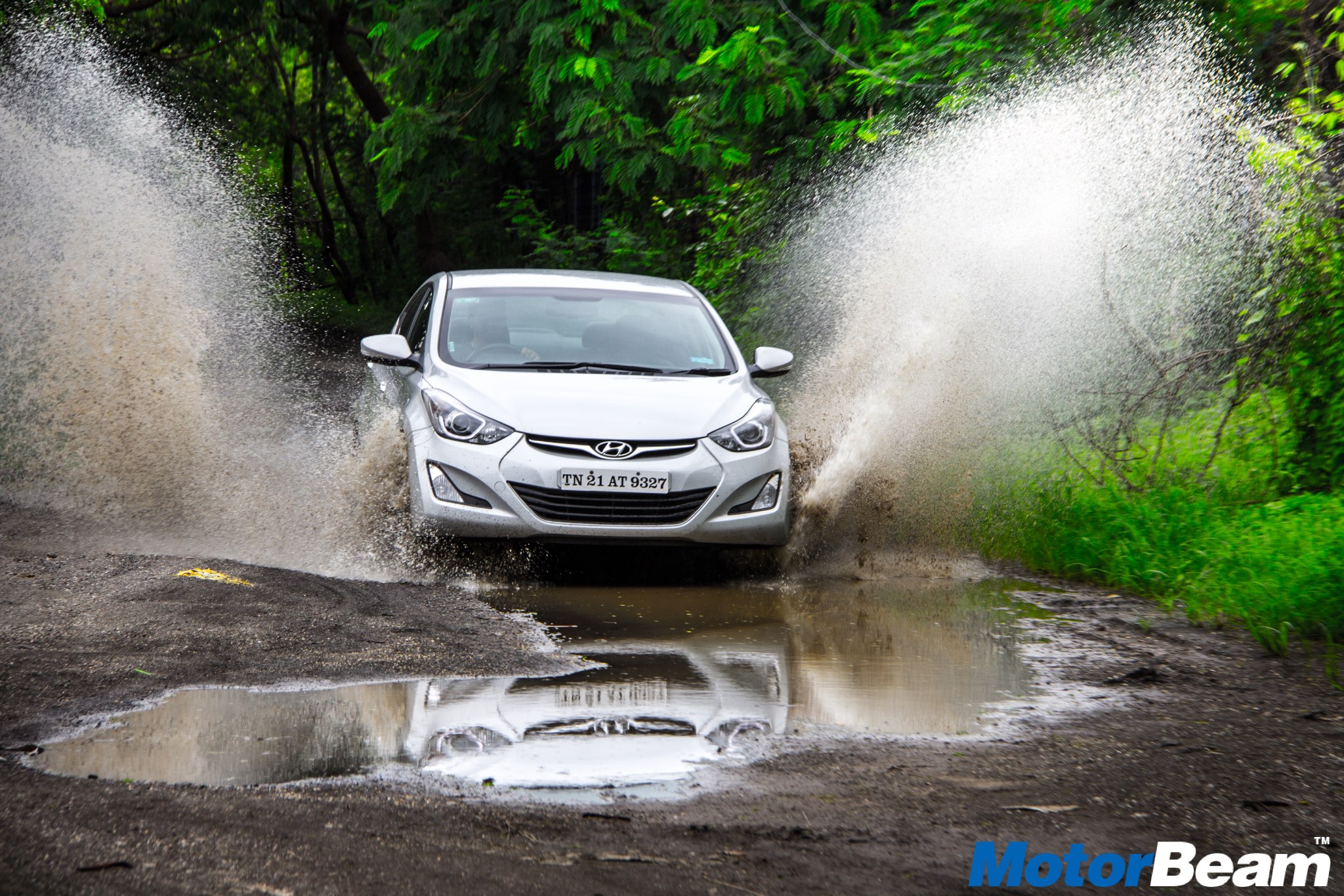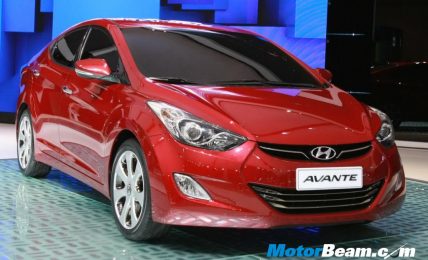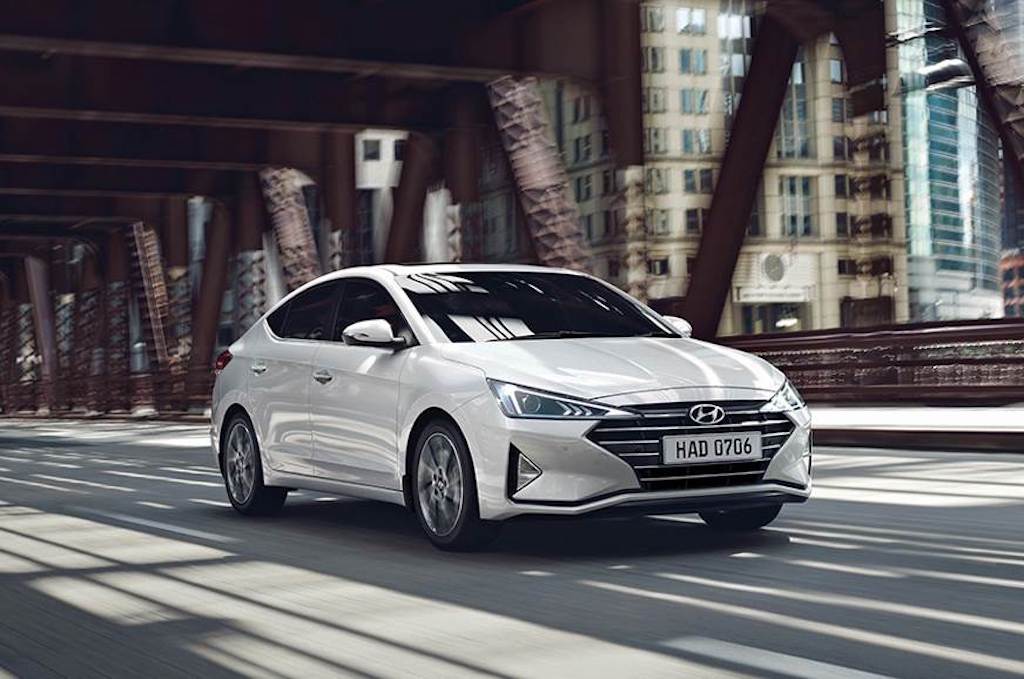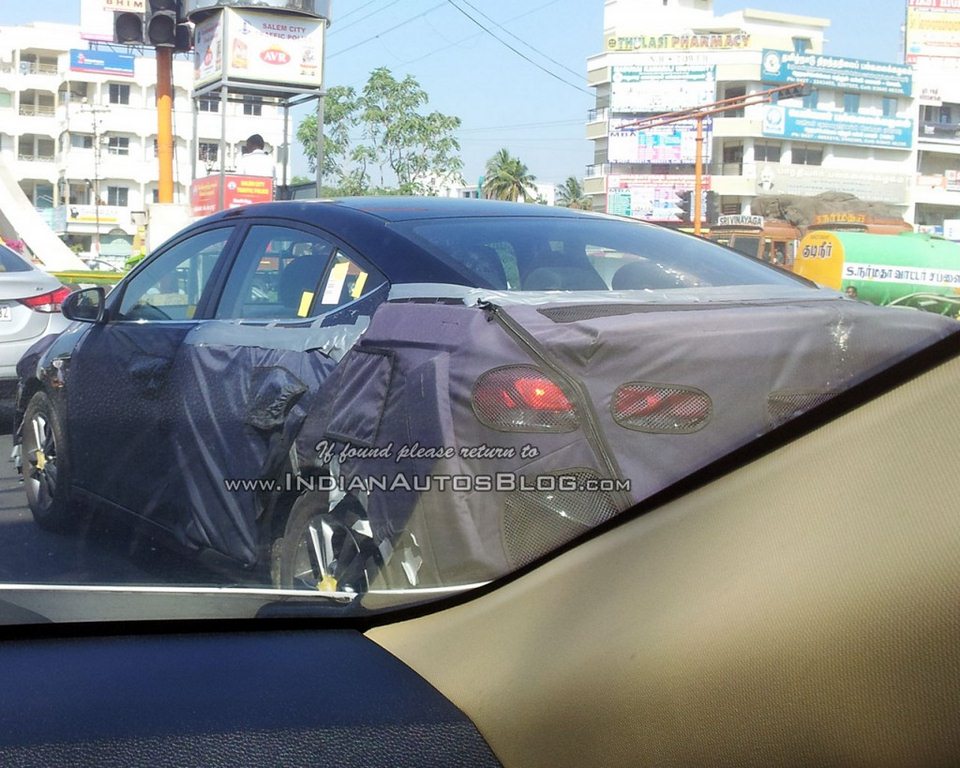
2016 Hyundai Elantra Facelift Long Term Review
Long Term Test No. 95
Car Tested: 2016 Hyundai Elantra CRDI
Kms Done: 2133 kms
Test Started at: 15,678 kms
Test Concluded at: 17,811 kms
Mileage: 11.36 km/l, 14.11 km/l (best), 10.34 km/l (worst)
Fuel Consumed: 188-litres
Fuel Cost: Rs. 10,716/-
Rs. per km: Rs. 5.02/-
The Hyundai Elantra is a good looking and practical sedan which is high on comfort
The fifth generation Elantra came to India in 2012. It was the first of the Hyundai cars to adopt the new fluidic design philosophy globally and became a big hit internationally. Hyundai had upgraded the Elantra only last year with a few bells and whistles along with some minor changes here and there. We have been using the Elantra as our daily drive and this car has been logging miles effortlessly. Here is the good and bad of it.
The fluidic design still looks fresh even after so many years
The Elantra was voted as the ‘2012 MotorBeam Car Of The Year’ and it had taken us a good amount of time to decide why the Elantra deserved to be there. At that time, it was the best selling car in the segment. However as the SUV craze caught up, the sales of sedans saw quite a drop. The biggest segment to be hit was the D-segment which has shown very little growth. We seem to think otherwise, the charm of the sedan has been there for a long time and will continue to be there. There are people who feel they have arrived only when they drive a sedan and they form the majority in India.
The Elantra has some serious road presence
Hyundai addressed a few shortcoming of this sedan in the facelift which was launched last year. Now that most of the Hyundai cars have moved over to the second iteration of the fluidic design philosophy, namely the V2.0, the Elantra still looks gorgeous in its original design. It looks flashy and inspite of ageing over the years, it still has a feeling of freshness around it. We like the parking lights which simulate DRLs. The projector lamps too work well to illuminate the road at night. The all black interiors look quite smart and are very comfortable too. Interior quality and fit finish is quite good and even with close to 18,000 kilometers on the odometer, the Elantra has barely shown any visible signs of wear and tear.
We like the all black interiors which came with the facelift
Space is generous in the cabin and 3 adults in the backseat were a comfortable fit. However, the rear seat is slightly raised in the middle and some occupants did find it a little uncomfortable over long journeys. Legroom is quite good and fitting a child seat at the back was quite easy too. Most of the features in the car are the same as the pre-facelift model except that Hyundai has now opted for a touchscreen audio system which also doubles up as the reversing camera display. The touchscreen is intuitive but is too small for a car in this segment. The best feature in the Elantra is the ventilated front seats, a feature which is amiss in some of the higher segment cars as well. The boot space too was well utilised for weekend trips and it was more than adequate. Another big improvement over the old model is the positioning of the AC vents. The old models front AC vents were oddly placed and obstructed airflow. This has been completely addressed now with the new positioning of the vents.
Power and torque feel adequate for all types of driving situations
Powered by a 1.6-litre oilburner, the Elantra churns 128 PS of power and 260 NM of twisting force. The power and torque are good enough for most and the car never really feels under-powered. Moreover, it stops the clock in just under 11 seconds in a 0-100 km/h run, which is reasonable. Even when fully loaded (including boot) the Elantra made good headway. NVH levels deserve a special mention as barely any sound makes it inside the cabin. Even the engine, when idling, is inaudible. Our test car came mated with a 6-speed automatic transmission. Now this is a big boon as driving becomes very easy and stress free in the city. However, being a single clutch unit, the shifts have an inherent lag and this will not please the enthusiasts. Most others will prefer the easy driving nature and will have nothing to complain about.
Driving dynamics are strictly average
We have used the car mainly in city conditions and hence majority of the driving has been through traffic. Monsoons are known to throw traffic out of gear and that is a very routine thing in Mumbai. The Elantra has been returning an average fuel economy of around 11.36 km/l. The best figure being 14.11 km/l which was achieved on our trip to Igatpuri while the worst was 10.34 km/l in typical wet city conditions. Traffic has been the main deterrent in achieving good fuel economy. On the sour side, the onboard computer does not show the ‘Distance To Empty’ reading, which should have been standard in this segment according to us.
The 6-speed automatic transmission made our life quite easy
The Hyundai Elantra offers decent performance but lacks in dynamics
There was a time when the Elantra was one the best handling Hyundai cars. At that time, the Verna and i20 were nowhere close to the benchmark set by the Germans. Now Hyundai has seriously upped their game with the newer models such as the Elite i20, i20 Active and the Creta having very respectable driving dynamics. The underpinnings of the facelift are pretty much the same as the old model and that means there is no significant difference in the handling characteristics. Dynamics are average and this sedan is more suited towards sedate driving rather than pushing it aggressively around corners. Steering feedback is strictly average and it feels vague as speeds climb. However, high speed stability is pretty decent.
The suspension is tuned for comfort, ride quality is good
Ride quality is tuned to be towards the softer side. This means the Elantra moves quite smoothly over potholes, keeping the passengers comfortable. However, at higher speeds, the suspension does get a bit bouncy. Even when the car is fully loaded, the suspension absorbs the bumps quite well. Brakes bite well and the tires offer good grip in both wet and dry conditions. The car also comes with traction control which works well to cut the power once it detects slip on any of the wheels. The Elantra comes with essential safety features like dual airbags, ABS, EBD etc. Hyundai service is known to be good and efficient so we don’t expect any post sale service issues with this Korean brand.
The upcoming Elantra is likely to become the best seller in its segment
The Elantra has aged quite gracefully and still feels quite good as a package. It does lack in a few areas such as driving dynamics but covers up with its ride, spacious interiors and lots of features to play around with. It is one such car which appeals both to the heart and mind. Our test has been cut short by the fact that Hyundai is all set to get the latest generation Elantra to Indian shores and this new car promises not only to address the shortcomings of the current car but if rumors are to be believed, it will raise the bar by a whole new level. Meanwhile, we are looking forward to the new Elantra and cant wait to get behind the wheel.
What’s Cool
* Feature loaded with equipment like ventilated seats
* Comfortable and spacious interiors
* Convenience of the automatic transmission
* Hyundai’s after sales service and ownership experience
What’s Not So Cool
* Driving dynamics not as good as the competition
* No distance to empty on the MID
Hyundai will be launching the next generation Elantra soon
Testers’ Note:
Further Reading –
Hyundai Elantra Facelift Review
Hyundai Elantra vs Volkswagen Jetta vs Skoda Octavia




